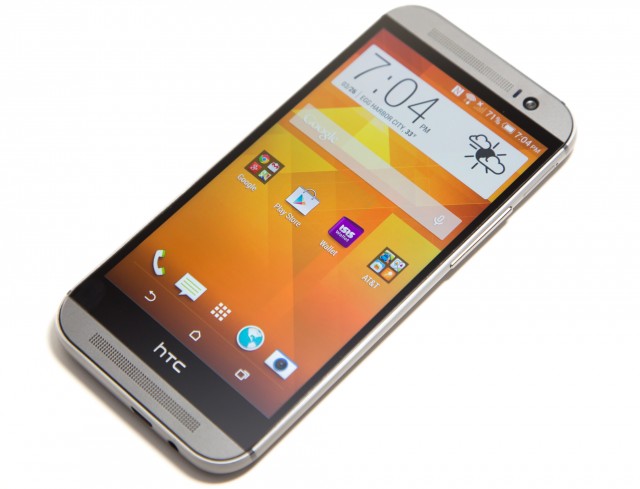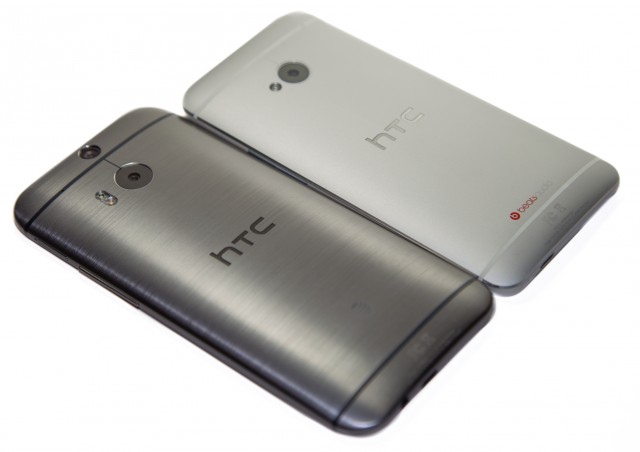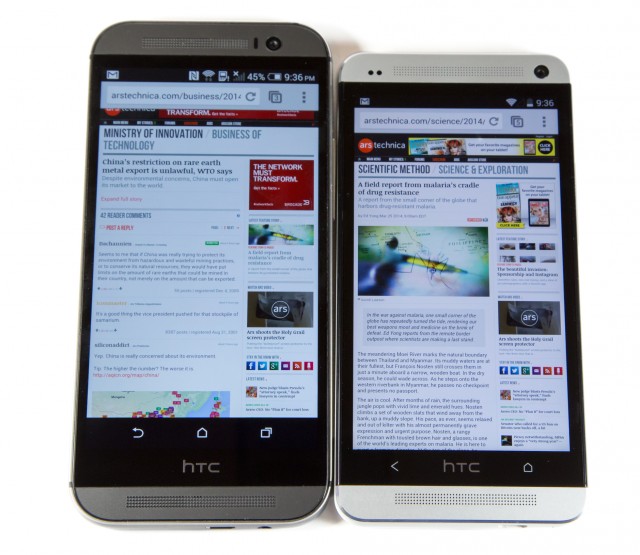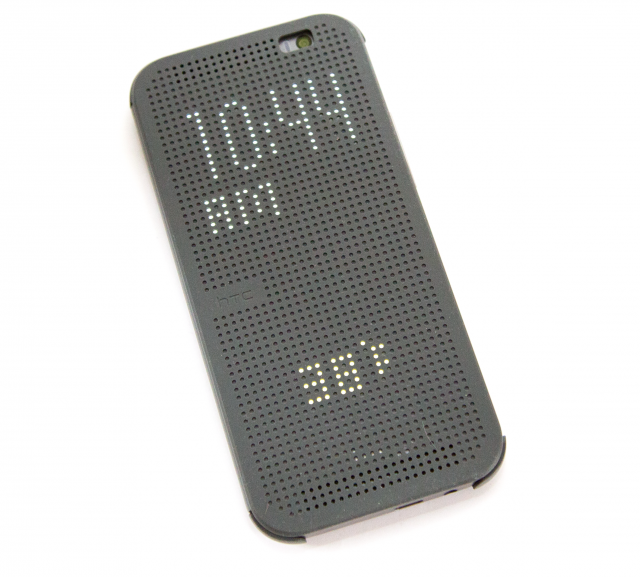
| Specs at a glance: HTC One M8 | |
|---|---|
| Screen | 1920×1080 5"(441 ppi) LCD |
| OS | Android KitKat 4.4.2 with Sense 6.0 |
| CPU | 2.36GHz quad-core Snapdragon 801 |
| RAM | 2GB |
| GPU | Adreno 330 |
| Storage | 16GB or 32GB, with MicroSD slot |
| Networking | Dual Band 802.11b/g/n/ac, Bluetooth 4.0, GPS |
| Ports | Micro USB, headphones |
| Camera | 4MP "UltraPixel" rear camera, 5MP front camera, depth sensor |
| Size | 146.36mm x 70.6mm x 9.35mm |
| Weight | 160g |
| Battery | 2600 mAh |
| Starting price | $200 on contract, $649 unlocked |
| Other perks | Front-facing stereo speakers, notification LED |
HTC has been in a tough spot lately. The last year seemed like one of the worst ever for the company, with problems in seemingly every area of the business. Multiple high-level employees left after the unprecedented failure of the HTC First, while others were indicted for taking kickbacks, falsifying expenses, and leaking trade secrets. Suppliers seemed to be distancing themselves from the company too, with The Wall Street Journal reporting that HTC had trouble getting the One out the door; suppliers apparently felt that HTC was no longer a "tier one customer.” Even without all this internal turmoil, HTC would have a large task ahead of it. The Taiwanese company's market share usually hovers around two to four percent, and it uses that tiny foothold in the smartphone market to stubbornly fight some of the largest companies in the world—Samsung's marketing budget, for instance, is higher than HTC's entire yearly revenue.
So, as curious onlookers wonder if the company is circling the drain, HTC reminds us that it is still here—and still fighting—with the release of the HTC One M8. Last year the company carved out a nice niche by being the only one brave enough to try to rival the build quality and materials of the iPhone. HTC seems to be adopting Apple's bi-yearly design cycle too, as the new HTC One is mostly an iterative update when compared to the original. It's a nice iteration—the phone is faster, and the back has been smoothed out and shined up—but we aren't convinced all the additions are improvements.
Design

The HTC One M8 is a refinement of the original One (now retconned as the "HTC One M7"). All the sharp edges have been smoothed out, thanks to the aluminum back now wrapping all the way around the phone to the screen. The plastic siding on the M7 has been eliminated, making the only plastic parts the top edge of the phone and two small strips that run along the back.
The aluminum, which was matte on the M7, has been shined up on the M8 and now has a brushed appearance, but not a brushed texture, which, we imagine, would have been grippier. It's kind of old hat for HTC by now, but the build quality of the M8 blows away every other Android phone on the market. It feels premium, sturdy, and makes the usual plastic Android phone look like a toy.

One of the complaints about the original One was the location of the power button, which, on top of a tall phone, was pretty hard to reach. Things aren't any better on the M8, which puts the power button on top of an even taller phone. HTC has tried to address this by adding double-tap-to-wake functionality to the screen—just tap twice on the screen while the M8 is off, and it will turn on. It's a super handy feature and one of our favorite additions to the device—it doesn't fix the entire problem, though. While turning the phone on is easy, turning it off remains really hard. Every other Android OEM has figured out the power button needs to be on the side of phones this large.
There is a reason for the top-mounted power button; it has an infrared LED embedded in it, which allows the M8 to control a home theater system. (We don't understand why HTC can't put the power button in a reachable place and just add an IR lens to the top of the phone, the way Samsung and LG do.) The button and the entire top edge of the phone is made of the same IR-transparent plastic that TV remotes use. This actually looks nice, and the plastic top presumably gives the Wi-Fi and cellular signal somewhere to escape.

The other major complaint about the M7 involved the navigation buttons, which removed the Recent Apps button to make room for HTC's logo. On the M8, the logo remains in the same spot, but HTC has moved to on-screen buttons, which use the proper "Back," "Home," and "Recent" layout. Google Now can be accessed just as on Nexus and Motorola devices, and extra buttons like "Menu" can easily be tacked onto the bar by apps. It's a nice improvement, but one of the expectations consumers have for using on-screen buttons is that you shrink the bezels down now that they don't host a control surface. HTC hasn't done that—in fact, the bezel is just as big as it was on the M7. Once you include the on-screen buttons, the black bezel, and the BoomSound speakers, you start to approach iPhone levels of bezel hugeness.
-
One crowd-pleasing addition will be the MicroSD slot, which sits on the left side of the device under a surprisingly large slot cover. You need a SIM tool to open it.Ron Amadeo
-
The headphone jack has been moved to the bottom.Ron Amadeo
-
Our unit came with a defect just above the front-facing camera; we hope yours does not.Ron Amadeo
And speaking of speakers, while the Beats branding is gone, the best speakers in the business are still here. The M8's front-mounted BoomSound speakers are loud and clear and closer in performance to laptop speakers. As we mentioned earlier, though, this sound fidelity comes at a price—namely, the size of the device. The Nexus 5 has the same size screen as the HTC One M8, but to get the M8's body down to Nexus 5 proportions, you'd have to cut off an entire speaker section. That's probably the worst part of the HTC One M8: it's very large for a 5-inch device. The 146mm height measurement is closer to that of a 5.7-inch Note 3 (151mm) than it is to other 5-inch devices like the Nexus 5 (138mm). Would you even make the speaker/size tradeoff if you had a choice? Headphones are still required for good music listening, and they're also needed in public for the consideration of others, so we question the usefulness of good phone speakers. BoomSound reminds us of people who bought giant boomboxes in the '80s instead of just getting a Walkman.

HTC created a cool little flip case for the HTC One M8 that still lets you see the time. Usually this is accomplished by having a large hole in the case so a portion of the screen can be read, which doesn't protect that portion of the screen very well. HTC's case lets you see the time, weather, and incoming notifications though a Lite-Brite style display. The case is full of tiny holes that allow light to come through, and a little magnet kicks the display over into a blocky 8-bit mode for the case. It's very well-done and an innovative way to display information through a protective cover.
reader comments
141